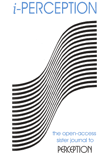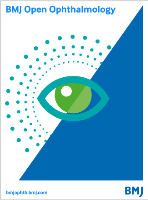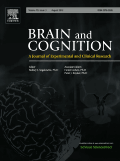
Journal of Eye Movement Research
Scope & Guideline
Bridging Research and Practice in Ophthalmology
Introduction
Aims and Scopes
- Eye Movement Analysis and Methodology:
The journal emphasizes innovative methodologies in eye movement research, including eye tracking technology, data analysis techniques, and experimental designs that enhance the understanding of gaze behavior. - Cognitive and Psychological Insights:
Research published in the journal often explores the cognitive aspects of eye movements, linking gaze patterns to cognitive processes such as attention, memory, and perception. - Applications in Various Domains:
The journal covers eye movement studies across diverse domains, including education, healthcare, marketing, and virtual reality, demonstrating the practical implications of eye tracking in real-world scenarios. - Interdisciplinary Approaches:
It encourages interdisciplinary research that combines insights from psychology, neuroscience, computer science, and design to better understand eye movements and their implications. - Clinical and Diagnostic Applications:
The journal addresses the clinical implications of eye movement research, particularly in diagnosing and understanding conditions such as dyslexia, brain injuries, and visual impairments.
Trending and Emerging
- Integration of Virtual and Augmented Reality:
There is a growing trend in research that investigates eye movements within virtual and augmented reality contexts, emphasizing how these technologies alter visual perception and interaction. - Cognitive Load and Eye Movements:
Studies exploring the relationship between cognitive load and eye movements are increasingly popular, providing insights into how gaze behavior reflects mental effort in various tasks. - Emotional and Social Perception:
Research examining how eye movements influence and reflect emotional and social interactions is on the rise, highlighting the importance of gaze in communication and perception of emotions. - Health and Clinical Applications:
Emerging studies focus on the application of eye movement research in clinical settings, particularly for diagnosing and treating conditions related to cognitive and visual impairments. - Data-Driven Approaches and Machine Learning:
The use of data-driven methodologies, including machine learning techniques for analyzing eye tracking data, is becoming a significant trend, enhancing the precision and applicability of findings.
Declining or Waning
- Traditional Eye Tracking Techniques:
There has been a noticeable decline in studies focusing solely on traditional eye tracking techniques without integration of advanced technologies or methodologies, as researchers increasingly seek innovative approaches. - Basic Visual Perception Studies:
Research centered on fundamental aspects of visual perception, such as basic eye movement patterns in isolation, appears to be less prevalent, indicating a shift towards more complex and applied research themes. - Limited Focus on Non-Digital Contexts:
The exploration of eye movements in non-digital contexts, such as print media or static images, is becoming less frequent as the field shifts towards digital environments and interactive media. - Decreasing Emphasis on Theoretical Frameworks:
There seems to be a waning interest in studies that solely focus on theoretical frameworks without empirical validation, as the journal increasingly prioritizes research grounded in substantial data. - Narrow Applications in Specific Populations:
Research targeting very specific populations or niche applications, such as studies solely focused on highly specialized groups without broader implications, is becoming less common.
Similar Journals

I-Perception
Unlocking the Mysteries of Sensory ExperienceI-Perception is a leading open-access journal published by SAGE Publications Ltd, specializing in the intricate interplay between perceptual processes across various disciplines such as Artificial Intelligence, Experimental and Cognitive Psychology, Ophthalmology, and Sensory Systems. With an ISSN of 2041-6695, this UK-based journal has been a vital resource since its inception in 2010. I-Perception occupies esteemed positions within several academic categories, including a Q2 ranking in Ophthalmology and Q3 rankings in both Artificial Intelligence and Experimental and Cognitive Psychology. These metrics highlight the journal’s relevance and impact, particularly in fostering interdisciplinary collaborations among researchers and practitioners. Accessible online, I-Perception encourages the dissemination of innovative findings and theoretical advancements, making it an essential platform for those passionate about understanding perception in its myriad forms. The journal's commitment to excellence is further reflected in its Scopus rankings, showcasing its influence within the respective realms of Medicine, Neuroscience, and Computer Science.

JOURNAL OF COGNITIVE NEUROSCIENCE
Exploring the neural pathways of thought.Welcome to the JOURNAL OF COGNITIVE NEUROSCIENCE, a premier publication in the field of cognitive neuroscience, published by the esteemed MIT PRESS. Since its inception in 1989, this journal has been at the forefront of advancing our understanding of the neural mechanisms underlying cognitive processes, boasting an impressive convergence period through 2024. With its Q1 ranking in the 2023 cognitive neuroscience category, it stands out among 115 peers, indicating its critical role in shaping contemporary research. The journal offers a comprehensive array of research articles, reviews, and methodologies aimed at researchers, professionals, and students alike, facilitating the exploration of complex cognitive functions. While not an open-access journal, it provides essential insights and significant contributions to the neuroscience community, making it an invaluable resource for anyone keen on delving into the intricacies of the human brain.

Multisensory Research
Unlocking the Secrets of Sensory InteractionMultisensory Research is a premier academic journal published by BRILL, dedicated to advancing the fields of cognitive neuroscience, computer vision, and sensory systems. Established in the Netherlands, the journal boasts a diverse scope, exploring the integration of sensory modalities in both experimental and cognitive psychology. With its converged years extending from 2013 to 2024, Multisensory Research has consistently contributed valuable insights, earning a well-regarded position within various quartiles, notably Q2 in Computer Vision and Pattern Recognition and Q2 in Ophthalmology as of 2023. The journal’s rankings reflect its significant impact, with placements such as rank #50 in Ophthalmology and rank #84 in Experimental Psychology, highlighting its relevance to today's interdisciplinary research efforts. Available as an open-access platform, Multisensory Research ensures that innovative research is accessible to a wide audience, making it an essential resource for researchers, professionals, and students alike who are engaged in the dynamic study of multisensory integration.

Ophthalmology and Therapy
Pioneering Research for a Brighter VisionOphthalmology and Therapy is a premier open-access journal published by Springer International Publishing AG, dedicated to advancing the field of ophthalmology through innovative research and clinical studies. With an ISSN of 2193-8245 and an E-ISSN of 2193-6528, this journal serves as a vital resource for researchers, healthcare professionals, and students interested in the latest developments in eye care and vision science. The journal has achieved a remarkable impact factor and has been recognized as a Q1 journal in Ophthalmology, reflecting its contributions to the discipline and its high-quality publications. Operating from the United Kingdom, Ophthalmology and Therapy is an open-access platform that has been available since 2012, ensuring that critical research is accessible to a global audience. Its commitment to fostering collaboration and knowledge sharing is exemplified by its ranking of #39 out of 137 in the Scopus category for Medicine – Ophthalmology, placing it in the 71st percentile of its peers. Together, these attributes highlight the journal's importance as a key forum for the dissemination of cutting-edge research, making it an essential addition to the libraries of institutions and professionals engaged in ophthalmic care.

Neuropsychologia
Connecting Dots Between Mind and Brain for Over 60 YearsNeuropsychologia, published by PERGAMON-ELSEVIER SCIENCE LTD, is a premier journal that delves into the intersections of psychology and neuroscience, specifically focusing on behavioral and cognitive processes. Since its inception in 1963, this esteemed journal has been a vital platform for researchers, professionals, and students, showcasing innovative studies and advancements in the fields of Behavioral Neuroscience, Cognitive Neuroscience, and Experimental Psychology. With a commendable impact factor, placing it in the Q2 category across multiple disciplines, Neuropsychologia is recognized for its contribution to the scientific community, ranking among the top journals in both Experimental and Cognitive Psychology and Neuroscience. The journal's commitment to excellence is evident in its rigorous peer-review process and its mission to disseminate cutting-edge research, making it an invaluable resource for those seeking to expand their knowledge and insights in neuropsychology. For further reading, the journal is accessible in both print and digital formats, ensuring that researchers can easily engage with the latest findings and theoretical advancements in this dynamic field.

BMJ Open Ophthalmology
Connecting Global Minds for Better Vision SolutionsBMJ Open Ophthalmology is an esteemed, open-access journal dedicated to the field of ophthalmology, published by the renowned BMJ Publishing Group. Established in 2016, this journal has quickly made its mark within the ophthalmology community, achieving a respectable Q2 ranking in the 2023 category quartiles. It is indexed in Scopus, boasting a commendable ranking of **#52** out of **137** in the medicine discipline of ophthalmology, placing it in the **62nd percentile**. This global platform is committed to disseminating high-quality research, clinical studies, and innovative practices that propel the understanding and treatment of eye diseases. With its open access model, BMJ Open Ophthalmology ensures that vital research is readily available to health professionals, researchers, and students, fostering collaboration and advancing knowledge within the field. The journal is based in London, United Kingdom, and continues to welcome submissions that explore the latest advancements in ophthalmic science, contributing to enhanced patient care and outcomes.

BRAIN AND COGNITION
Connecting Neuroscience with Psychological InsightsBRAIN AND COGNITION, published by Academic Press Inc Elsevier Science, stands as a vital resource for researchers and practitioners in the realms of cognitive neuroscience and psychology. Established in 1982, the journal has continuously evolved, showcasing cutting-edge research that bridges the understanding of brain functions and cognitive processes up to 2024. With an impressive impact factor reflecting its commitment to high-quality scholarship, the journal currently holds a prestigious Q1 ranking in Arts and Humanities (miscellaneous) and notable Q2 rankings in various psychology fields, including Cognitive Neuroscience, Developmental and Educational Psychology, Experimental and Cognitive Psychology, and Neuropsychology. This multidisciplinary journal cultivates a rich academic dialogue, offering valuable insights to professionals, researchers, and students alike. Although it does not offer open access, its robust indexing in Scopus and consistent contribution to important discussions in cognitive research define its critical role in advancing knowledge and innovation in the cognitive sciences.

PROGRESS IN RETINAL AND EYE RESEARCH
Transforming Insights into Eye HealthPROGRESS IN RETINAL AND EYE RESEARCH, published by PERGAMON-ELSEVIER SCIENCE LTD, is a premier journal dedicated to the advancement of knowledge in the fields of ophthalmology and sensory systems. With an impressive impact factor and a Q1 category ranking in both Ophthalmology and Sensory Systems as of 2023, this journal exemplifies excellence in research dissemination. Given its stature, it ranks #1 out of 137 in Ophthalmology and #1 out of 42 in Neuroscience - Sensory Systems, placing it within the top percentile of scientific publications in these domains. The journal has been actively contributing to the field since its inception in 1994 and continues to be a vital resource for researchers, clinicians, and students seeking the latest insights and breakthroughs in the understanding of retinal diseases and eye health. While it maintains a traditional subscription model, the journal remains committed to publishing high-quality, peer-reviewed articles that drive forward the frontiers of eye research and therapeutic innovation. With its strong scientific rigor and a vast array of articles, PROGRESS IN RETINAL AND EYE RESEARCH is indispensable for anyone invested in the study of visual sciences.

JOURNAL OF MOTOR BEHAVIOR
Exploring the Dynamics of Human MovementJOURNAL OF MOTOR BEHAVIOR, published by Routledge Journals, Taylor & Francis Ltd, is a leading platform that explores critical insights into the dynamics of motor functions and behavior across various disciplines including biophysics, cognitive neuroscience, and sports science. With an ISSN of 0022-2895 and an E-ISSN of 1940-1027, this journal has been a vital resource since its inception in 1969, offering a comprehensive analysis of motor control, skill acquisition, and the neural mechanisms underlying motor performance. Positioned in the Q3 quartile across multiple categories for 2023, it ranks competitively within its fields, such as #136 in Orthopedics & Sports Medicine and #95 in Experimental & Cognitive Psychology. JOURNAL OF MOTOR BEHAVIOR serves not only as an essential reference for researchers and professionals but also as an invaluable resource for students pursuing studies in motor behavior and related areas, reflecting the ongoing evolution and significance of this field in enhancing our understanding of human movement and performance.

African Vision and Eye Health Journal
Empowering vision care through open access research.African Vision and Eye Health Journal is an esteemed publication dedicated to advancing the fields of ophthalmology, optometry, and public health across the African continent. Published by AOSIS, this journal serves as a vital platform for disseminating research, clinical practices, and educational advancements aimed at improving eye health and vision care. As an Open Access journal, it ensures that knowledge is freely accessible to researchers, healthcare professionals, and practitioners, fostering collaboration and innovation. With its ISSN 0378-9411 and E-ISSN 2410-3039, the journal is committed to enhancing the understanding of vision-related issues affecting diverse populations, making it an invaluable resource for those dedicated to the promotion of eye health in Africa. By providing cutting-edge research and insights, the African Vision and Eye Health Journal plays a critical role in addressing the challenges of eye health and is a key resource for anyone committed to making a difference in this essential field.